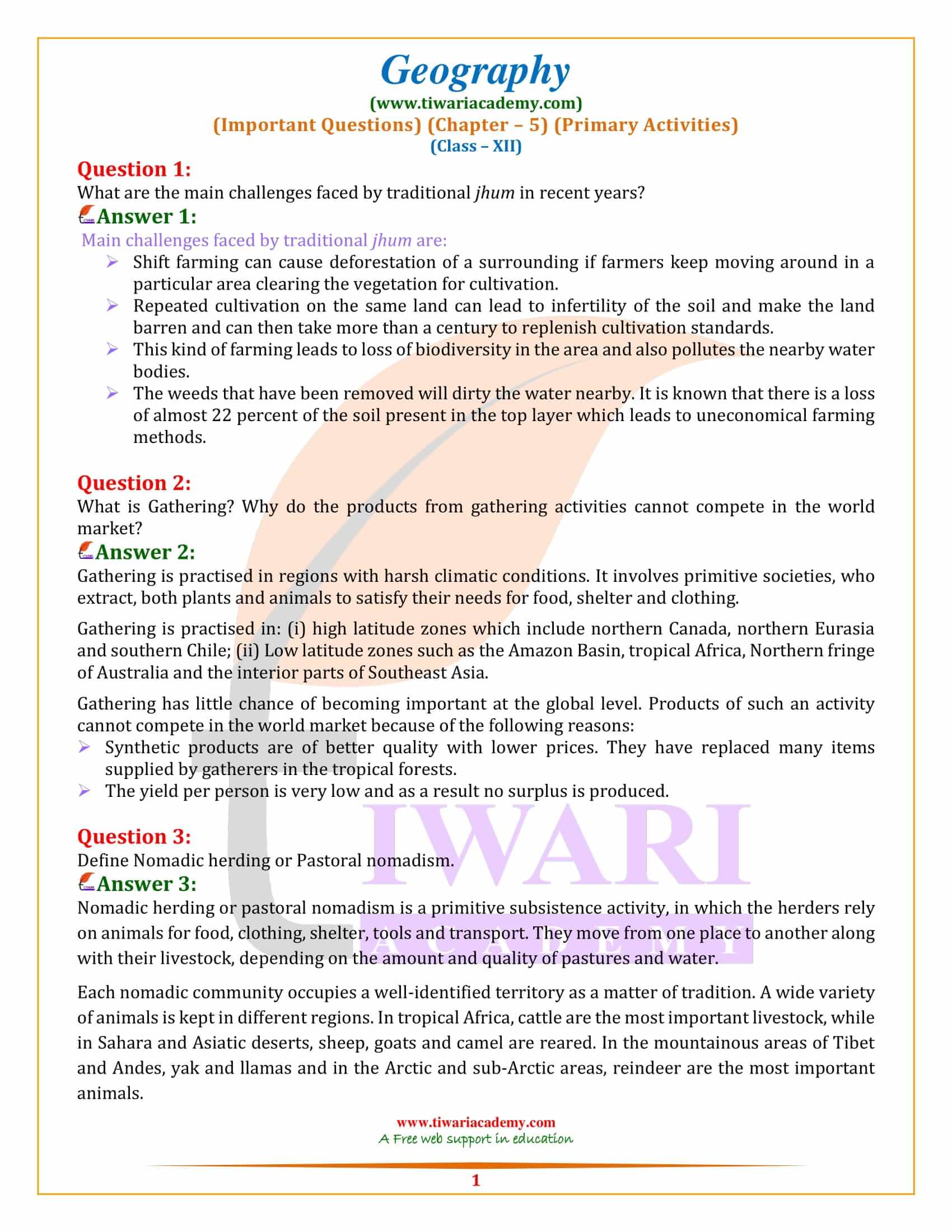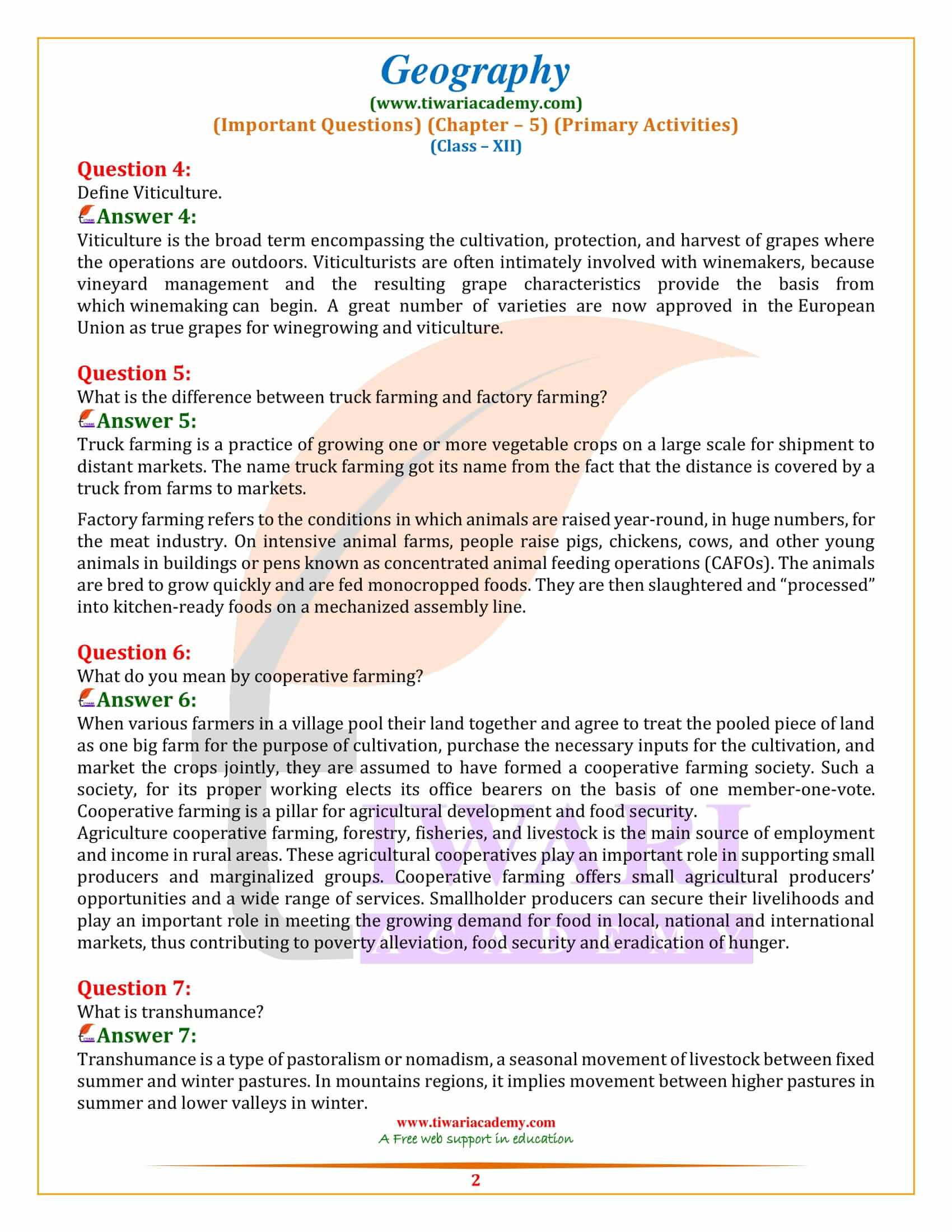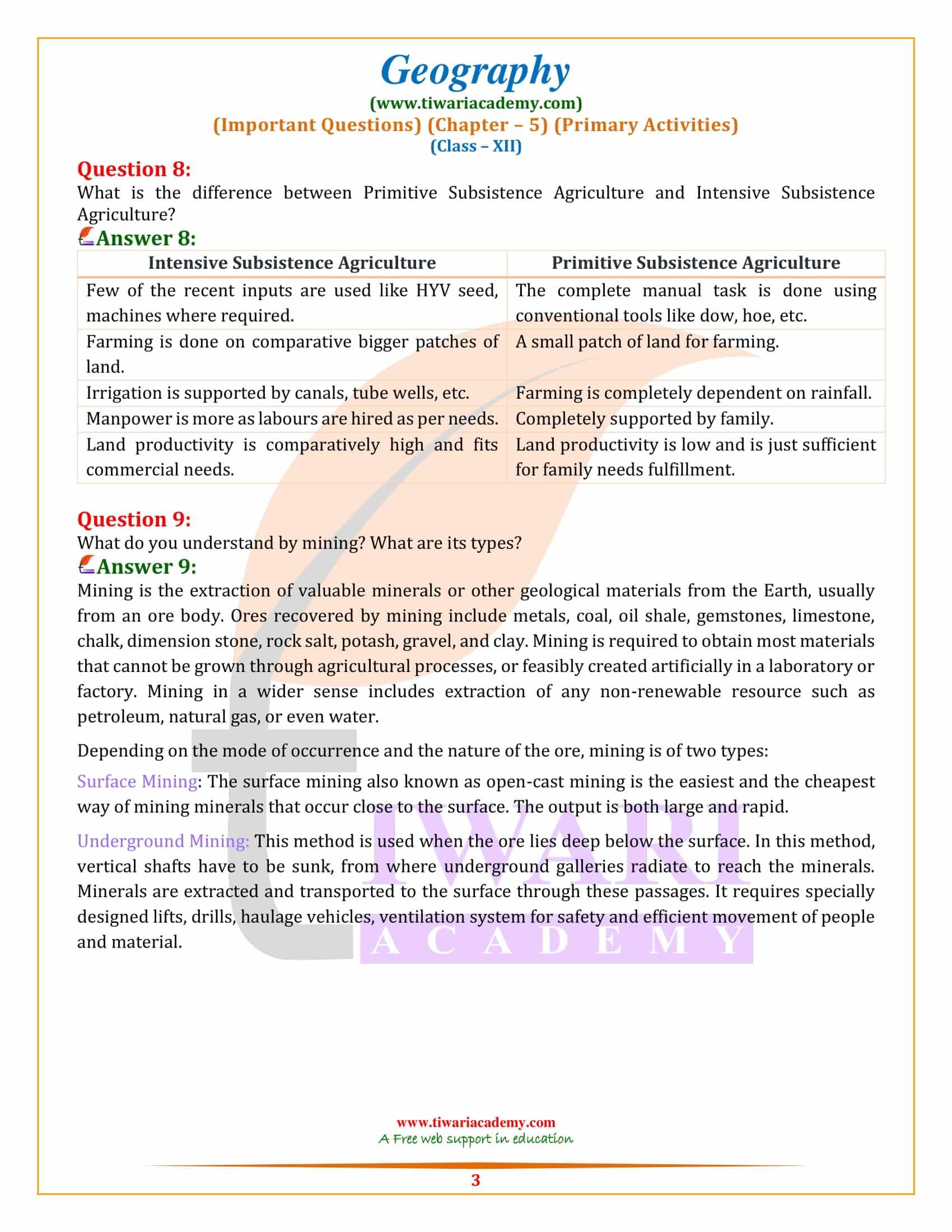NCERT Solutions for Class 12 Geography Chapter 5 Important Questions of Primary Activities designed and updated for CBSE session 2024-25. Class 12 Geography chapter 5 Fundamentals of Human Geography extra question answers are confined to NCERT books only.
Class 12 Geography Chapter 5 Important Questions
Class 12 Geography Chapter 5 Important Extra Question Answers
What are the main challenges faced by traditional jhum in recent years?
Main challenges faced by traditional jhum are:
- Shift farming can cause deforestation of a surrounding if farmers keep moving around in a particular area clearing the vegetation for cultivation.
- Repeated cultivation on the same land can lead to infertility of the soil and make the land barren and can then take more than a century to replenish cultivation standards.
- This kind of farming leads to loss of biodiversity in the area and also pollutes the nearby water bodies.
- The weeds that have been removed will dirty the water nearby. It is known that there is a loss of almost 22 percent of the soil present in the top layer which leads to uneconomical farming methods.
What is Gathering? Why do the products from gathering activities cannot compete in the world market?
Gathering is practised in regions with harsh climatic conditions. It involves primitive societies, who extract, both plants and animals to satisfy their needs for food, shelter and clothing.
Gathering is practised in:
- High latitude zones which include northern Canada, northern Eurasia and southern Chile;
- Low latitude zones such as the Amazon Basin, tropical Africa, Northern fringe of Australia and the interior parts of Southeast Asia.
Gathering has little chance of becoming important at the global level. Products of such an activity cannot compete in the world market because of the following reasons:
- Synthetic products are of better quality with lower prices. They have replaced many items supplied by gatherers in the tropical forests.
- The yield per person is very low and as a result no surplus is produced.
Define Nomadic herding or Pastoral nomadism.
Nomadic herding or pastoral nomadism is a primitive subsistence activity, in which the herders rely on animals for food, clothing, shelter, tools and transport. They move from one place to another along with their livestock, depending on the amount and quality of pastures and water.
Each nomadic community occupies a well-identified territory as a matter of tradition. A wide variety of animals is kept in different regions. In tropical Africa, cattle are the most important livestock, while in Sahara and Asiatic deserts, sheep, goats and camel are reared. In the mountainous areas of Tibet and Andes, yak and llamas and in the Arctic and sub-Arctic areas, reindeer are the most important animals.
Define Viticulture.
Viticulture is the broad term encompassing the cultivation, protection, and harvest of grapes where the operations are outdoors. Viticulturists are often intimately involved with winemakers, because vineyard management and the resulting grape characteristics provide the basis from which wine making can begin. A great number of varieties are now approved in the European Union as true grapes for wine growing and viticulture.
What is the difference between truck farming and factory farming?
Truck farming is a practice of growing one or more vegetable crops on a large scale for shipment to distant markets. The name truck farming got its name from the fact that the distance is covered by a truck from farms to markets.
Factory farming refers to the conditions in which animals are raised year-round, in huge numbers, for the meat industry. On intensive animal farms, people raise pigs, chickens, cows, and other young animals in buildings or pens known as concentrated animal feeding operations (CAFOs). The animals are bred to grow quickly and are fed monocropped foods. They are then slaughtered and “processed” into kitchen-ready foods on a mechanized assembly line.
What do you mean by cooperative farming?
When various farmers in a village pool their land together and agree to treat the pooled piece of land as one big farm for the purpose of cultivation, purchase the necessary inputs for the cultivation, and market the crops jointly, they are assumed to have formed a cooperative farming society. Such a society, for its proper working elects its office bearers on the basis of one member-one-vote. Cooperative farming is a pillar for agricultural development and food security.
Agriculture cooperative farming, forestry, fisheries, and livestock is the main source of employment and income in rural areas. These agricultural cooperatives play an important role in supporting small producers and marginalized groups. Cooperative farming offers small agricultural producers’ opportunities and a wide range of services. Smallholder producers can secure their livelihoods and play an important role in meeting the growing demand for food in local, national and international markets, thus contributing to poverty alleviation, food security and eradication of hunger.





